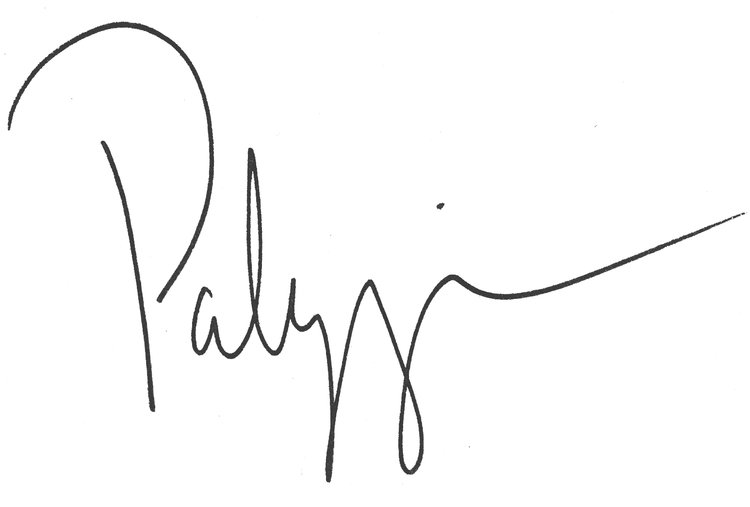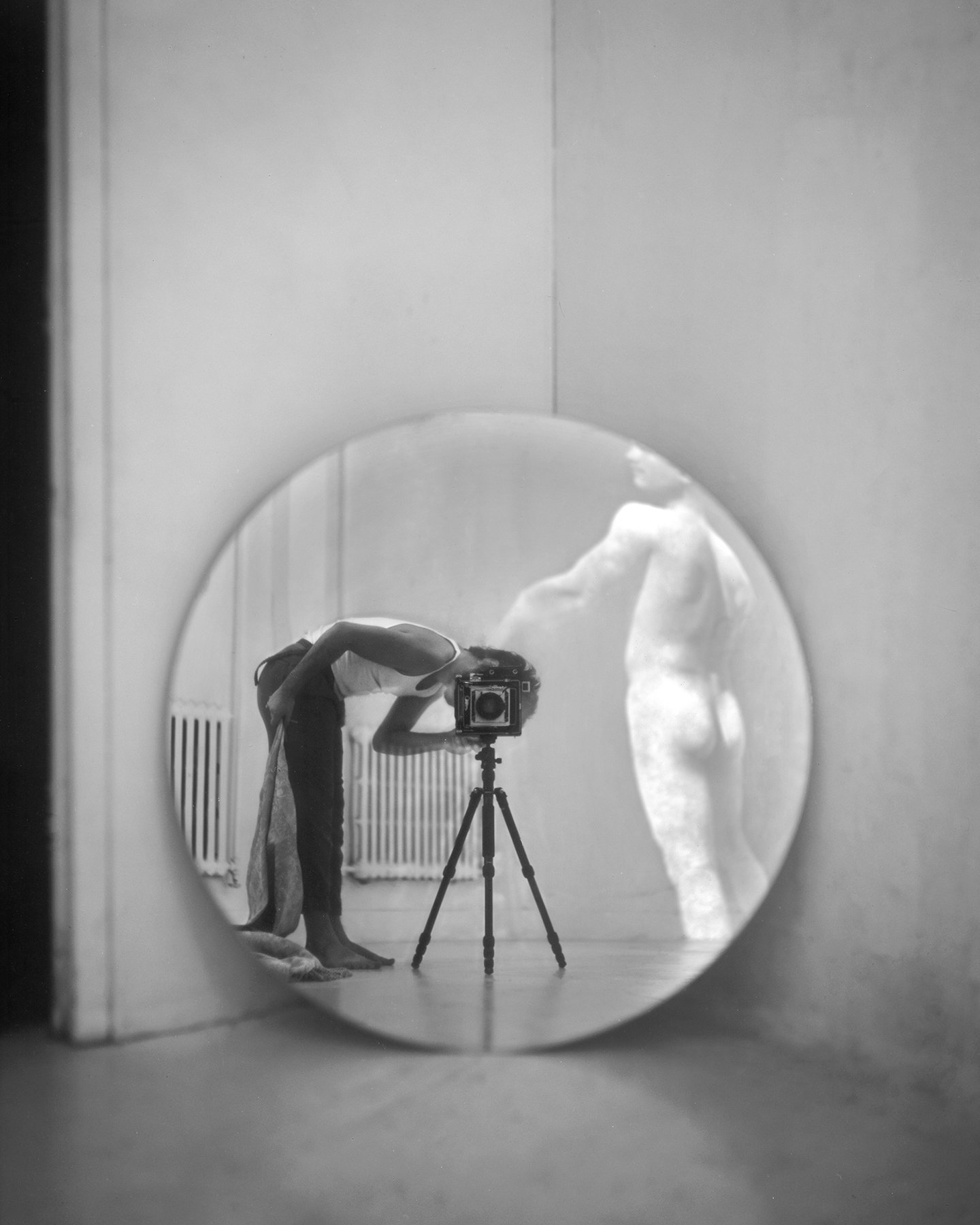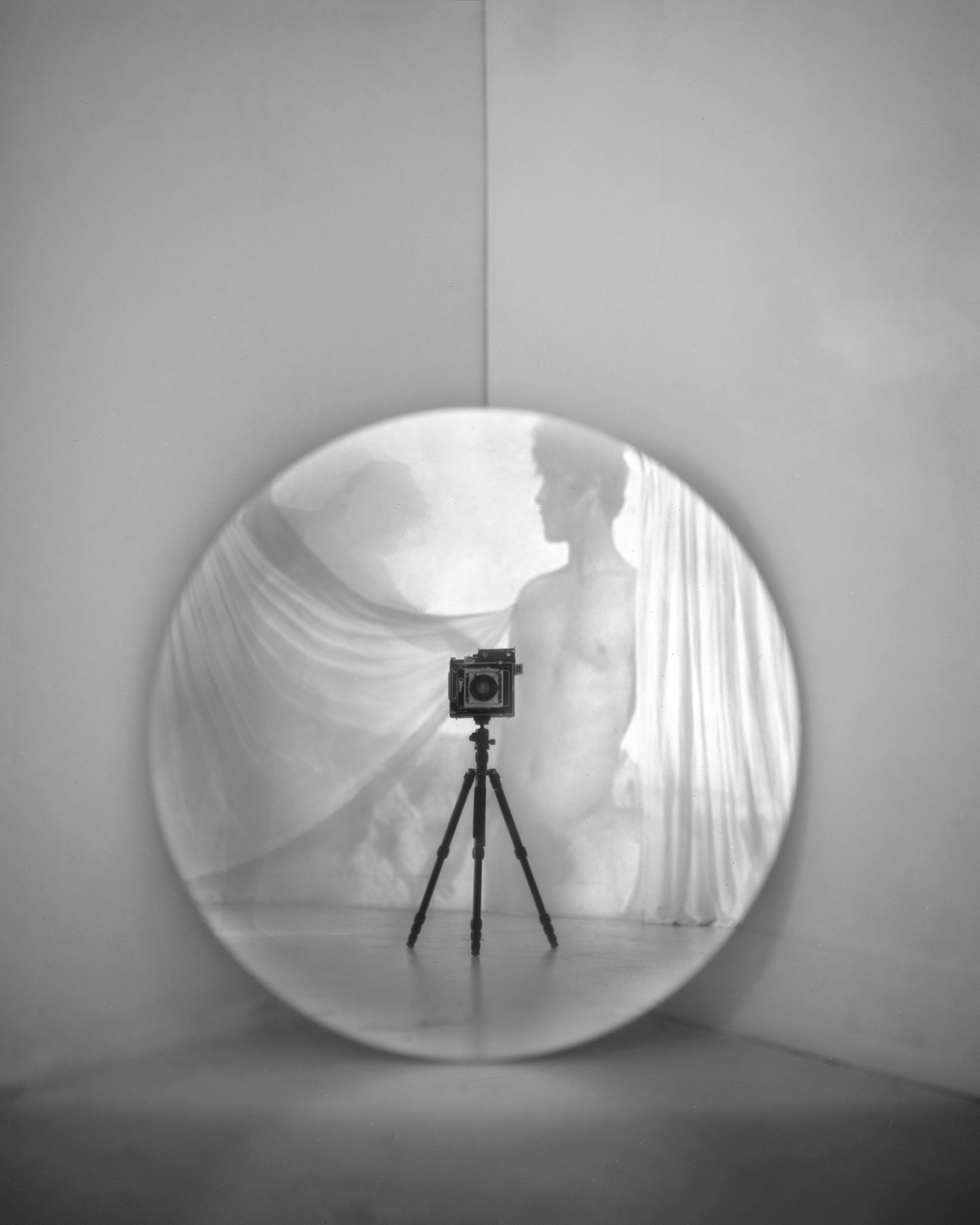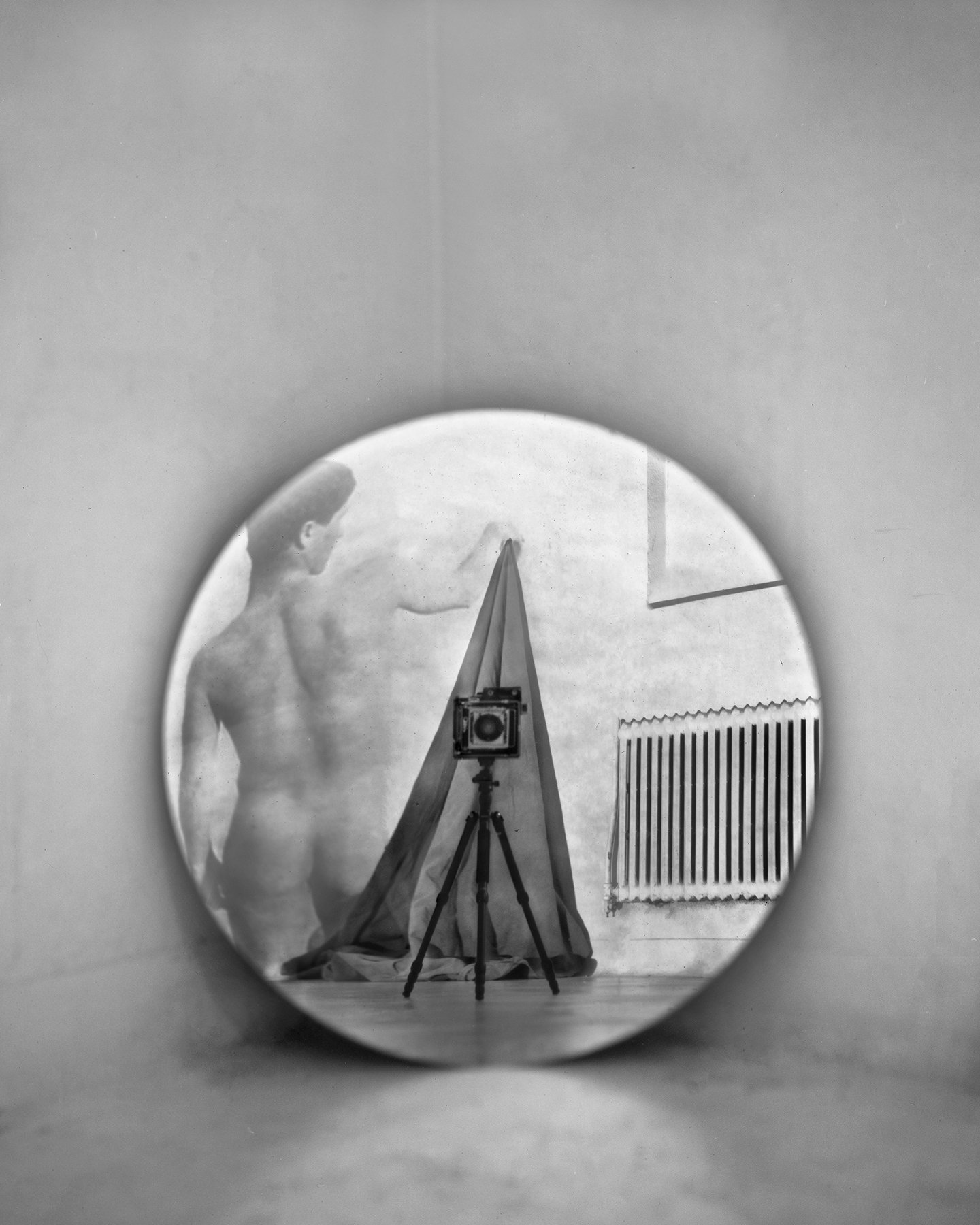SYMPHONIE FANTASTIQUE
In Symphonie fantastique, Paluzzi references his queer body and the legacy of LGBTQIA+ artists—Claude Cahun, Robert Mapplethorpe, and Paul Mpagi Sepuya—who used self-portraits for self-expression, exploration, and acceptance. Through four photographs reflecting the first acts of Berlioz’s symphony about love, death, and obsession, Paluzzi positions himself between his camera and projections of Wilhelm von Gloeden’s images. Von Gloeden, whose work merges male sexuality with Greek ideals, is a foundational figure in queer self-portraiture. Paluzzi's work creates a space between his mortal body and the idealized bodies von Gloeden captured, continuing this rich tradition in queer photography.
Symphonie fantastique I-IV
Pigment ink print on cotton rag paper
17 x 22 in | Edition of 5
2022
Symphonie fantastique V
Pigment ink print on cotton rag paper
40 x 50 in | Edition of 1
2022





